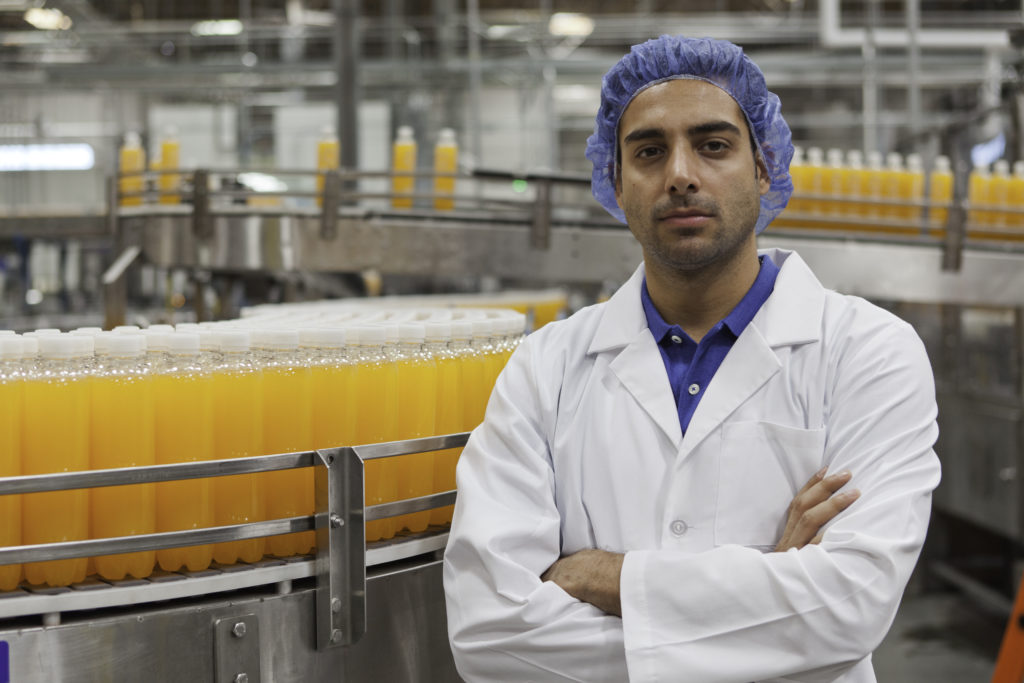Food safety is serious business, and facilities processing and handling products and ingredients have to be aware of the primary types of food safety hazards, as well as the best methods of prevention. The top four safety concerns in the food industry are biological, chemical, and physical contaminants, as well as allergens.
Biological
The most common hazards are biological. These risks come from the contamination of food products by microorganisms, such as bacteria, viruses, and parasites. These little creatures are found everywhere – in the air, water, the human body – and, in many cases, they aren’t inherently dangerous. However, if harmful strains or pathogens get on the food and are allowed to thrive in the handling or processing conditions, consumers can contract foodborne illnesses.
How Can You Prevent Biological Safety Concerns?
The survival and growth of microorganisms are directly related to the conditions in the facility handling food. These conditions include temperature, moisture levels, and cooking times. By implementing a sound processing and storage strategy for all ingredients and continuously monitoring and calibrating instruments that gauge the factors listed previously, you can prevent biological contaminants. Instructions on the packaging for the consumer to follow are also essential, such as proper cooking times.
Chemical
Chemical hazards are potentially harmful substances that could pose a risk to consumers and employees. There are naturally-occurring chemicals (any biochemical compounds produced by plants in response to certain conditions or stressors), intentionally-added preservatives (such as sodium nitrate, a common additive to cured meats), and unintentionally-added chemicals (such as pesticides, which are applied in the growing stage).
 How Can You Prevent Chemical Safety Concerns?
How Can You Prevent Chemical Safety Concerns?
Preventing chemical concerns rests on hygienic procedures, stringent sanitation requirements, and proper training. Employees must know and follow strict guidelines and store chemicals in designated areas separated from the ingredients and final food products. Companies can also make a point of limiting the use of chemicals to those generally recognized as safe.
Allergenic
 Allergenic hazards can be the most dangerous of the four safety concerns. Allergic reactions occur when the human body produces an abnormal immune response to specific proteins in food. The most common ones in Canada are eggs, milk, peanuts, tree nuts, shellfish, fish, soy, sulphites, sesame, wheat and mustard. These are what’s known as “priority allergens.” A facility needs to have a plan that reduces and separates allergens, as more than three million Canadians report having a food allergy.
Allergenic hazards can be the most dangerous of the four safety concerns. Allergic reactions occur when the human body produces an abnormal immune response to specific proteins in food. The most common ones in Canada are eggs, milk, peanuts, tree nuts, shellfish, fish, soy, sulphites, sesame, wheat and mustard. These are what’s known as “priority allergens.” A facility needs to have a plan that reduces and separates allergens, as more than three million Canadians report having a food allergy.
How Can You Prevent Allergen Concerns?
Companies can reduce the risk of an allergic reaction by separating processing areas, using stringent sanitation techniques, and list the potential allergenic ingredients on product packaging. It’s hard to remove allergens completely, but by having the proper HACCP plans and providing the right information on the packaging, a company can protect its consumers.
A manufacturer of prepackaged food products must declare the presence and potential of priority allergens and gluten sources on the label. If they don’t disclose this, they could violate the Food and Drugs Act and the Safe Foods for Canadians Act.
Physical
Physical safety hazards are any foreign objects found in food products. The most common physical concerns are those found naturally in a food product that a company tries to take out during processing, such as fruit seeds or bones. However, this class of safety concerns also includes items not part of the ingredients, such as pieces of metal, bits of plastic, and hair. The latter is more dangerous, and many consumers consider the natural physical hazards more of a nuisance than a danger to their health. Even still, it’s essential to have measures to ensure your food products leave the facility free of anything that could affect consumption.
How Can You Prevent Physical Safety Concerns?
Prevention of physical hazards relies on the thorough inspection of food and beverage products and strict adherence to internal and external food safety regulations, such as Hazard Analysis Critical Control Point (HACCP). It can also depend on the environment in which the food company makes their food; proactive measures can eliminate even the potential of a physical contaminant getting into food products. For example, light bulbs made from acrylic material rather than glass can protect consumers and employees; if the bulb breaks, acrylic fractures into larger pieces without splintering.
